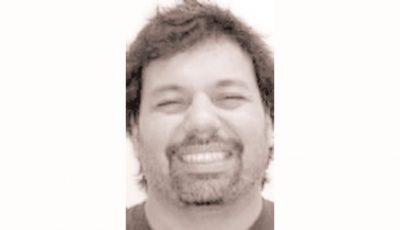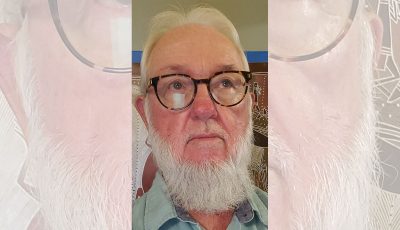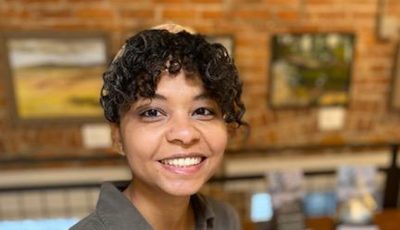Hiroshima bombing survivor advocates for peace

Dr. Hideko Tamura Snider, a Hiroshima atomic bomb survivor, speaks of the importance of planting seeds of peace during the Northern Marianas Humanities Council lecture series last Sunday. (Daisy Demapan)
In a presentation held at the Charley’s of Pacific Islands Club last Sunday, Snider discussed the influence of that trauma upon her subsequent life in Japan and the United States.
“My story started 70 years ago…it started on Tinian the morning of Aug. 6. I was a very happy child and Hiroshima was a very mild place,” she said, in stark contrast to the next few minutes that occurred that day.
“At 7:15 there was a warning that there were three planes in the air and an alarm went off. At 7:30, an announcement came on and they said ‘it’s very safe now’ and to go on with our day,” she said.
“It was a war-weary time and this was an American solution. At 8:15, no one suspected,” she said, noting that she was only a little over a mile away from Ground Zero.
Snider said her mother was most likely crushed under concrete and burned to death, much like her cousin Hideyuki who was enamored of B-29 bombers and likely stared into the sky before his death.
“I never found my mother,” she said, when she went looking for her after being pummeled by large pieces of glass in the building she was in.
“People were lying in schoolyards and fields to die while burning corpses were scattered all over Hiroshima.”
“What happens with thermal wind after explosions is that it reflects and acts like a suctioning force. People’s eyes popped out, their tongues could not go back in and their organs fall out. Radiation zaps through your body. It goes through the marrow of your bones and kills everything that’s alive,” she said.
As a Hiroshima atomic bomb survivor, Snider spent decades of her life planting seeds of peace after the war, illustrating the need for future generations to embrace a culture of peace instead of violence.
Snider said her main reason for coming to the islands was to introduce the concept of planting peace.
“I share sympathy and apology for the actions of the Japanese military to those who incur the wounds still,” she said.
She noted that if you grow up in a culture of violence, being uptight and resentful is all that is reflected upon but cultivating values of perseverance and forgiveness allows for inner and outer peace.
She posed a question to her audience: “Where do children get their culture and wisdom from?” to emphasize the role that parents play in the upbringing of their children. She recounted how her mother and father defied Japanese cultural marriage traditions in pursuit of love. She said that after her father was disinherited by his family, the most important thing she learned was to do good.
In terms of war, “enemies are enemies, you don’t think about being human. There were incendiary bombings and if by a miracle you survived, the planes would return and shoot to exterminate.”
About recent news, she said, “I heard one military general say about ISIS that collateral damage is an absolute necessity, that the bombings of Hiroshima and Nagasaki ended the war and brought peace. I believe that is a myth.”
The biggest point of her concept narrative, she said, is in choosing peace over anger, hatred or war.
“It was really hard for me. The values you keep are what help you, even in the worst times. If you truly believe in civility, it is what gets you through. Being at the bottom of the pit is the greatest opportunity for personal growth,” she said.
“I wanted to end my life one time, but then I changed my mind. With exception to Banzai Cliff, you must reflect back to who you are in authenticity for transformative healing,” she said.
Transformative healing is a change in perspective, in understanding of self and changes in lifestyle and behavior.
“Seeds don’t grow without caring, without attention,” she said, adding that what you sow is what you harvest.
“I’m not excusing anybody, but humiliation for Japanese survivors of Hiroshima was so utmost that there was no room for anything else but peace. If you sow and harvest [the culture of war] it’ll come again. If the human race is not on top of nuclear weapons, Armageddon is not far away,” she said.
Snider said that many advocates of peace and survivors of war have grown old and that their final years are near, which begs the question of who will take over after they’ve passed on.
The 82-year-old Snider stated that this would probably be her last visit to the islands as she returned to the mainland yesterday.
Snider is the 2015 Hiroshima Ambassador for Peace and a retired psychiatric social worker from the University of Chicago hospital.
She has authored a memoir, One Sunny Day: A Child’s Memories of Hiroshima, and a picture book about creating peace in the world called When the Peace Tree Blooms.
Snider helped found the “One Sunny Day Initiatives” that seeks to educate the public about the consequences of the use of nuclear weapons and to plant seeds of peace, hope, and reconciliation among people of the world.
Snider’s presentation was sponsored by the Northern Marianas Humanities Council as part of its community lecture series.



























